Suriname
Things to Do
Paramaribo
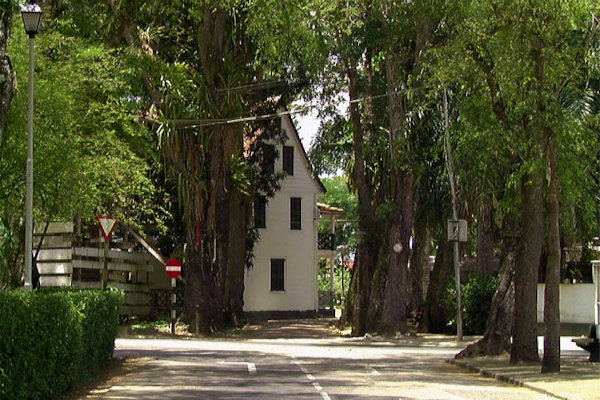 |
|||||
The area was settled by the British in 1630, and in 1650 the city became the capital of the new English colony.
The area changed hands often between the British and Dutch but was under Dutch rule from 1815 until the independence of Suriname
in 1975.
In January 1821 a fire in the city centre destroyed over 400 houses and other buildings. A second fire in September 1832 destroyed
another 46 houses on the western part of the Waterkant.
Suriname's capital Paramaribo (often abbreviated to 'Parbo') is a curious hybrid of northern Europe and tropical America.
Imposing brick buildings overlook grassy squares and wooden houses crowd narrow streets, but towering palms shade some areas
and mangroves still hug the riverside.
Fort Zeelandia
The establishment of the fortress Fort Zeelandia on the banks of the Surinam river marks the beginning of the city of
Paramaribo.
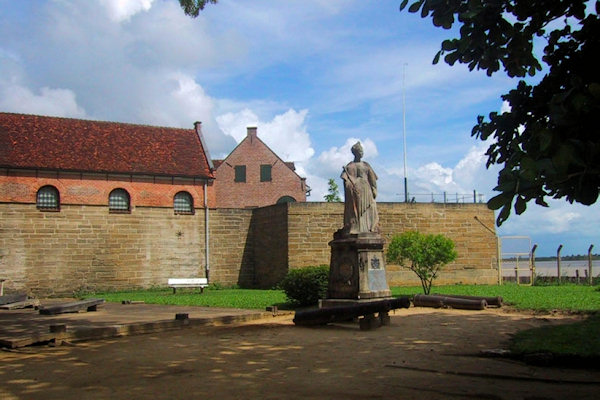 |
|||||
It is said that around 1644, on the very spot of the fortress, there was a stronghold of palisades. This was captured by the English
in 1650, who reinforced it. Willoughby, the English commander in chief reconstructed the fortress in stone and named it Fort
Willoughby.
Abraham Crijnssen, from the Dutch province of Zeeland, reconquered the place in 1667 and renamed it Fort Zeelandia.
Since 1838 the stone fortification mainly served as a prison.
After the revolution of the Petty Officers in 1975 the army took possession of the fort.
This resulted in the darkest days of the fort after the period of the punishments of slaves in the 18th and 19th centuries: the
incarceration of political opponents and the December assassinations of 1982 which took place here.
Nowadays the fort houses the Surinam museum.
Onafhankelijkheidsplein
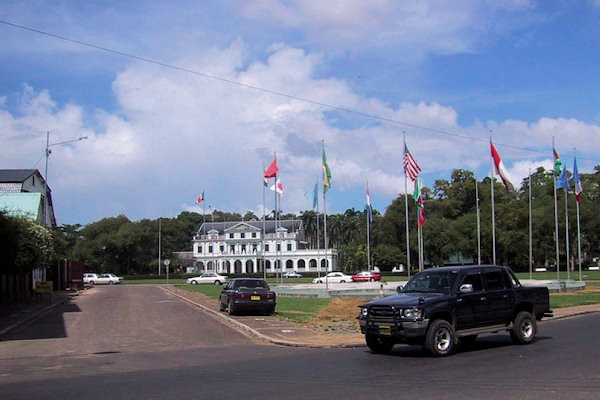 |
|||||
An historic site in the center of Suriname’s capital, Independence Square (Onafhankelijkheidsplein) is an area in town
commemorating the country’s freedom from the Dutch in 1975.
Today, the area is filled with many other attractions including the Presidential Palace (Dutch: Gouvernementsgebouw), The
the National Assembly of Suriname, the Congress building, the Court of Justice and the Ministry of Finance
(which holds features a statue of legendary former prime minister Pengel).
It is one of the most prolific and best maintained examples of Dutch colonial architecture in Suriname and is part of the UNESCO
world Heritage site of the Paramaribo inner-city.
Behind the palace is the Palmentuin, a shady haven of tall royal palms that's home to a troop of capuchin monkeys.
Diferent Cultures
Many different cultures and religions live together in Suriname.
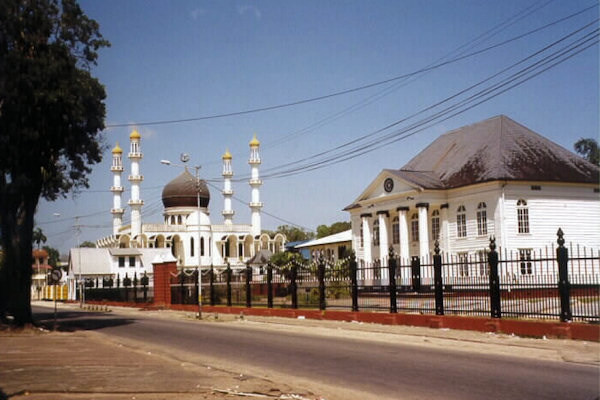 |
|||||
One remarkable example is that a Jewish Synagogue and a Muslim Mosque are so close together. They are almost neighbours
and everything goes well. If you want to see this for yourself you have to go to the "Keizerstraat" near the crossing with the
"Steenbakkerijstraat"
Another interesting building is the St. Petrus and Paulus Cathedral. The Cathedral was built from 1883 to 1885, because the
first big church in Suriname was distroyed in a big fire in 1821 and the people wanted to have a new church.
The towers were added at a later stage at the beginning of the 20th century. It is possible to make an excursion to the Cathedral.
In 1810 construction of thr Dutch Reformed Church, based on an octagonal was started, but it was also lost in the big fire of
1821. It was only in 1833 that the decision was taken to build today’s church, which is clearly inspired by the octagonal domed church.
Prince Willem Frederik Hendrik was present on the 5th of July 1835 at the inauguration of the church, which was finished in 1837.
Weg naar Zee
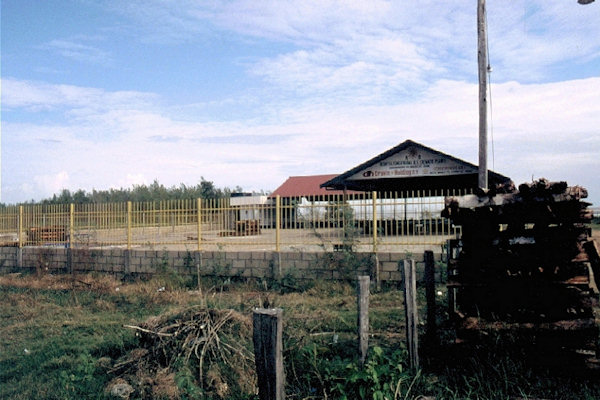 |
|||||
“Weg naar Zee” which is Dutch for “Road to the Sea” is located just 8 to 10 km northwest of Paramaribo.
At the sign Bedevaartsoord an unpaved road runs straight on to a Hindu temple while the paved road bends to the left here towards an
open-air cremation site. Here the Hindu community cremates its deceased in the open air, and eventually scatters the ashes
in the sea.
Het "bedevaartsoord Rameshwaram" holds the largest statue collection of Hindu deities in Suriname. Several of these have
been donated by rich families who want you to know that they did so.
Suriname River
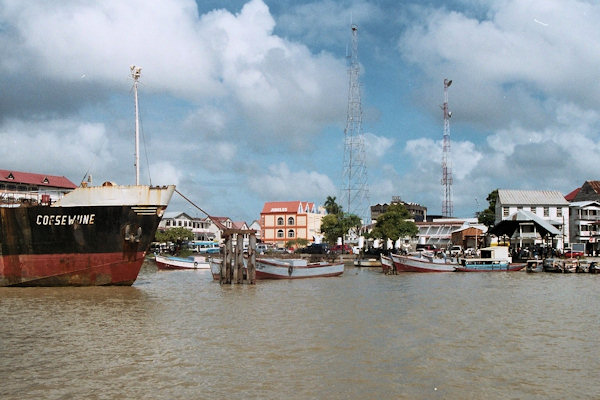 |
|||||
The Suriname River is 480 km long and its sources are located in the Guiana Highlands
For import and export, the Suriname River is by far the most important river in the country. Not only do all vessels carrying
bauxite, aluminum oxide and aluminum depart from Suriname via the river, nearly all vessels carrying materials vital for Suriname
enter the country at Braamspunt in order to offload their cargoes in the harbours of Paramaribo (immediately south of
the city centre), or the harbours of Paranam – approximately 30 km from Paramaribo – which are vital for the aluminum industry.
The Jules Wijdenbosch Bridge, is a bridge over the Suriname river between the capital city Paramaribo and Meerzorg in
the Commewijne District. the bridge has two lanes, is 1504 metres long, and was opened on 20 May 2000
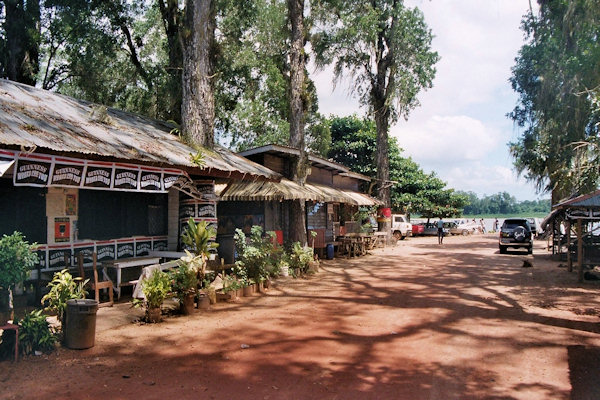 |
|||||
Domburg’s picturesque central square is located alongside the Suriname River. It is shaded by huge mahogany trees and
lined with Javanese “warungs”: small restaurants where you can enjoy local food such as deep fried cassava with spicy fish
or “pitjil” served in a banana leaf. Especially on Sundays this is a marvelous spot to relax and chat with the locals.
Near Domburg, an artificial white sand beach has been created along the Suriname River. The adjoining strip of water has been
protected with nets to allow swimming in the Piranha-infested waters. As a result of this and associated recreation facilities,
White Beach is a popular weekend destination.
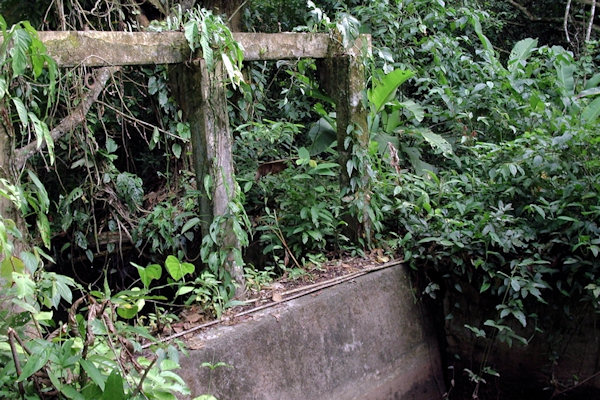 |
|||||
On the rightside bank of the Suriname river lies Chattillion an old colony for leprous persons, where the late Dutch
missionary Petrus Donders worked in 19th century.
When he died in 1887 he was buried at the local cemetery. In 1900 his body was moved to the St. Petrus and Paulus Cathedral and in
1982 pope John Paul II declared him blessed. Nowadays there is not much left; it's taken over by the jungle, but it's a nice way
to experience a jungle.
Jodensavanne was the first and only place in the New World where Jews had been granted a semi-autonomous settlement.
Jews, fleeing the Spanish inquisition were welcomed in Suriname, first by the British and later by the Dutch, to settle and own
the land along the River Suriname. In order to attract Jewish settlers, the colonial government offered Jews special privileges,
including freedom of religion, freedom of ownership and the right to their own judicial court.
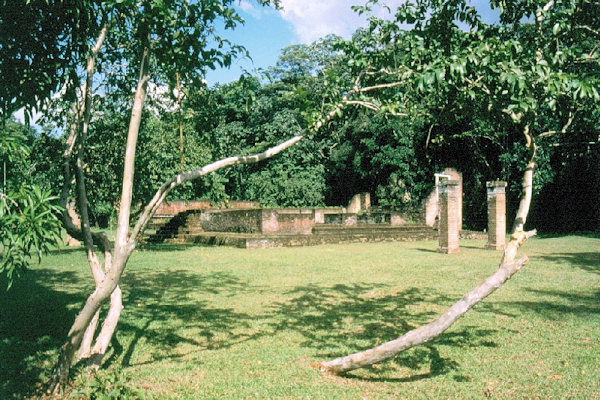 |
|||||
The Jewish merchants were especially desired for their expertise on international trade. In 1665 the Jews achieved a piece of land
close to the Cassiporacreek to build a synagogue and to layout a cemetery. Shortly afterwards, the community moved to a hill
overlooking the River Suriname where the settlement of Jodensavanne was founded.
In 1685 a synagogue, named Beraha VeShalom (Blessing and Peace), was inaugurated. Prior to this consecration, there did not
exist in the New World any synagogue of major architectural stature. Beraha VeShalom was made of brick from Europe.
The cemeteries of Jodensavanne and Cassipora are of exceptional grandeur.
The cemetery of Cassipora counts 216 tombstones. The oldest grave dates from 1667.
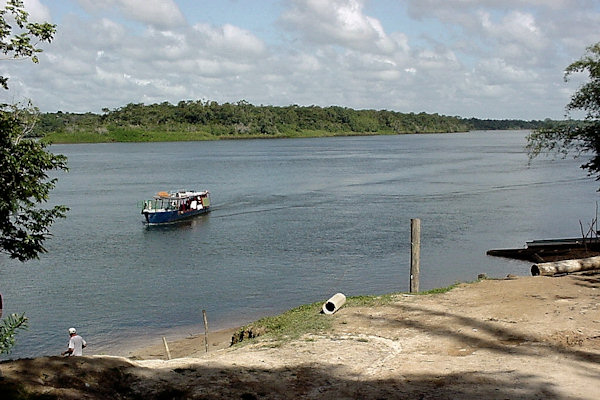 |
|||||
The cemetery of Jodensavanne has approximately 452 graves. A large number of stones are of marble imported from Europe, other
graves are made of bricks. Some stones are beautifully ornamented.
Though Redi Doti is a recently established village (1930) that started with the construction of a Roman Catholic Church,
its roots can be traced back to the 17th century.
The Indigenous community of Redi Doti is relatively small and comprises around 120 individuals. Since the civil strife of the 1980s,
many villagers have left and settled in the capital or near to Paramaribo.